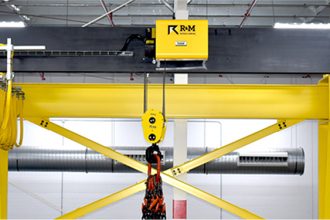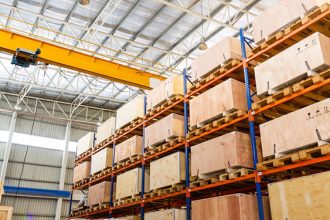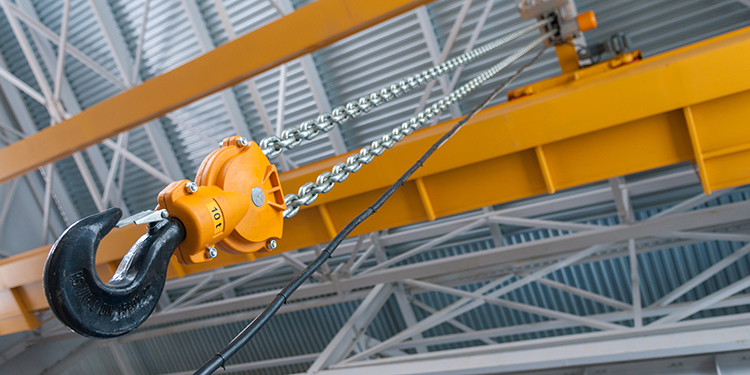
This article by Tom Gresham previously appeared in Volume 11, Issue 4 of MHI Solutions magazine.
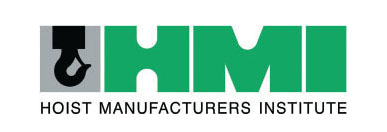 The hoist equipment that falls under the umbrella of the Hoist Manufacturers Institute (HMI), an independent trade association affiliated with MHI, covers a wide spectrum of lifting needs—from smaller hoists with capacities of up to two tons to higher-capacity hoists that can lift up to 250 tons and above. Still, no matter the lifting requirements, the training of the workers who man the hoists is crucial to a safe environment.
The hoist equipment that falls under the umbrella of the Hoist Manufacturers Institute (HMI), an independent trade association affiliated with MHI, covers a wide spectrum of lifting needs—from smaller hoists with capacities of up to two tons to higher-capacity hoists that can lift up to 250 tons and above. Still, no matter the lifting requirements, the training of the workers who man the hoists is crucial to a safe environment.
“Obviously, in our industry, there’s a big focus on the training of operators,” said Keith Butler, president of HMI and national sales manager for MHI member Piedmont Hoist and Crane.
That’s why providing extensive training materials and opportunities has been a top priority of the HMI group in recent years. HMI has developed extensive safety guidelines and worked hard to make them more readily accessible. That includes not only publishing them on the HMI website and providing them to hoist customers but partnering with OSHA to create and share content together. In addition, HMI has encouraged its member companies to post the guidelines on their individual sites.
“We’re just trying to make it as easy as possible for the manufacturers who use our equipment to be able to refer to those materials and make it straightforward to onboard new talent,” said Rob Beightol, vice president of HMI and director of marketing for MHI member Gorbel.
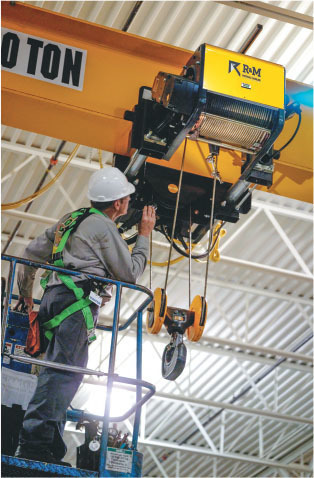 Lower-Capacity Hoist Training in Demand
Lower-Capacity Hoist Training in Demand
Lower-capacity hoists frequently are used in large numbers in one facility by operators, requiring many workers to be trained on them. Large-capacity hoists on large cranes, meanwhile, only need one or two workers to be trained and certified to operate them, leading to fewer labor shortage concerns. Beightol said the recent difficulties that manufacturers who use lower-capacity hoists have had in finding qualified workers has made training especially time-consuming.
As a result, he said, “we’ve seen a lot more requests for training materials and specifications. And, at times, HMI members are getting requests to go on site to produce training sessions.”
No matter the scale of the lifting, Beightol said HMI members aim to use a consultative approach with users of their equipment, trying to understand their specific challenges and objectives.
“For example, because of the inability to attract labor in a lot of industries, there may have been jobs in the past where they were using a two-person operation, but because of the lack of workers, they’re looking for ways to possibly move that into a one-person operation,” Beightol said. “Hoists may be able to assist with that, especially if it’s a case of trying to move from what was a manual process in the past to a somewhat automated process.”
Ergonomics is Increasingly Important to Hoist Users
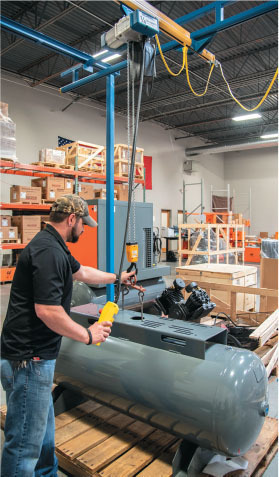
Beightol said ergonomics has been under the spotlight as manufacturers and others strive to create a safety culture and reduce worker absences due to injury. Beightol said speaking with workers closely can help hoist makers understand where there are repetitive processes that can cause strain on the body over time.
“Realistically, with the correct hoist and system in place, we might not eliminate but we can alleviate some of that strain on the body,” Beightol said. “Without hearing directly from the workers, you may be offering something without seeing the maximum benefit from it.”
Ergonomics are not an issue for higher-capacity hoists, which do not depend on workers completing a lot of repetitive movements. Butler said increasing automation with heavier equipment is reducing the number of employees exposed to large cranes, and that trend is likely to continue as companies look to find ways to operate with fewer workers. Butler said automation’s continuing growth will come with additional safety improvements and increasingly precise remote monitoring of equipment for predictive maintenance purposes.
“Just by the nature of it, you don’t have as many operators so you’re not seeing the safety issues that you would have seen,” Butler said. “Also, the automation is becoming so sophisticated that you can tell a crane not to go in a zone of the building when there’s an employee present.”
Variable Frequency Drives (VFDs) Protect Workers
For higher-capacity hoists, VFD safeguards play a key role in preventing operators from inappropriate, unsafe movements. Butler said VFD controls have added safety features so that operators can monitor not just the load itself but the condition of the hoist components.
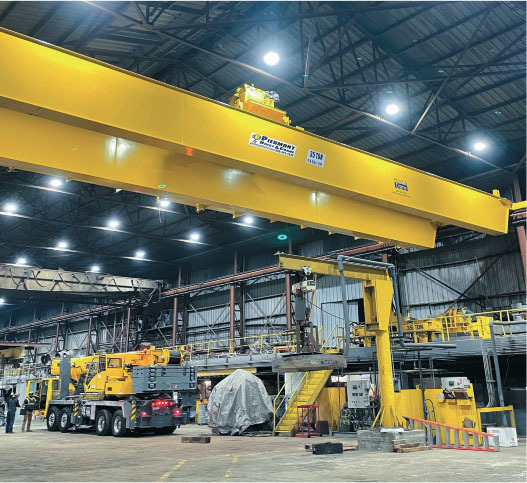
“With the advancement of Flux Vector VFD controls, there is a greater awareness of any unsafe condition, and the system will shut down,” Butler said. “What that creates is a scenario where there’s much more safety involved in the controls of the hoist, and it’s more difficult for a hoist to have a problem and fail to stop. The advancements in VFD controls have been the biggest improvement I think on the hoist and crane side from a safety perspective.”
Beightol said consulting with the workers doing the work can help hoist providers create the best possible conditions in any environment, including through special tooling that can help workers navigate the specific needs of their jobs.
“We have had success by getting buy-in from the actual worker from the outset rather than trying to come up with a one-size-fits-all approach,” Beightol said. “That’s where HMI members have that ability to provide assistance to make sure that every lift is always safe and responsible.”
To learn more about the Hoist Manufacturers Institute, visit mhi.org/hmi.


